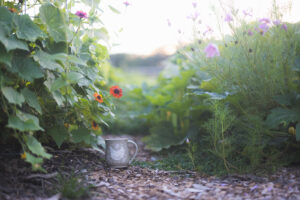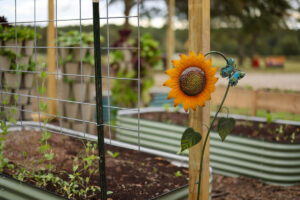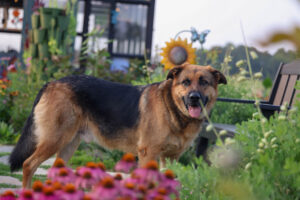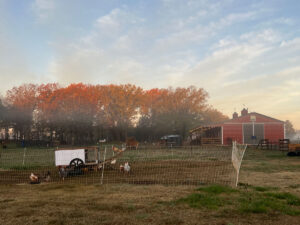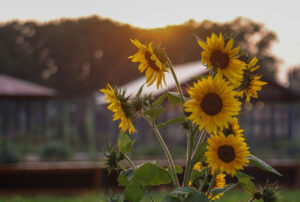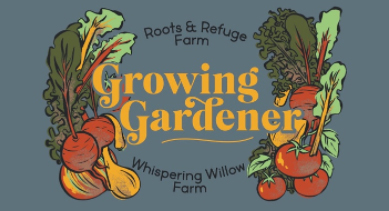Tomatoes are one of the first vegetables people think of when they decide to try their hand at gardening. Almost everyone loves a good, juicy tomato to add to their sandwich or salad, and no store-bought tomato compares to an organic, vine-ripened one! As I have experimented over the years, I’ve learned a few tricks to help produce a bountiful harvest. Read on for my best tips on how to plant tomatoes including how to prepare, amend, and prune tomato plants.
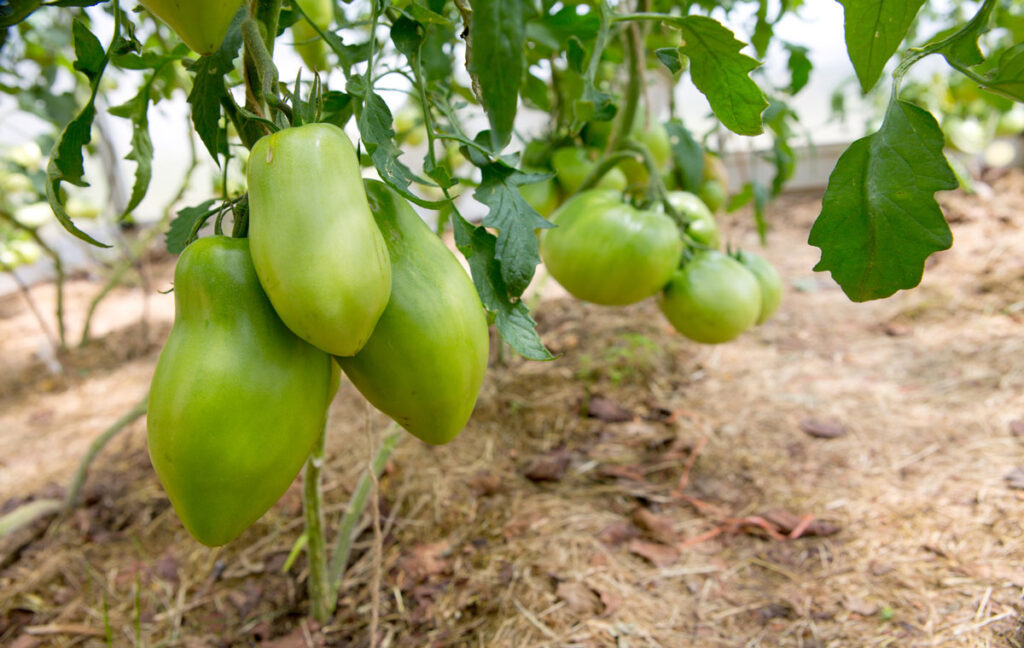
When to Plant Tomatoes
It is very important to wait until the soil is warm! If you plant too early, you not only risk the danger of a late freeze ruining your plants, but you will also stunt growth. The plants need warmth to grow. The exact time will vary according to your growing climate. You will need to wait until there is no more danger of frost, and the garden soil has reached a temperature of 60°F – 65°F. In most zones, this happens in late spring or early summer.
The Best Location for Tomatoes
The best location for your plants will need to have lots of sunshine! Ideally, your plants will need 6-8 hours of direct sunlight daily. However, these hours do not need to be consecutive. Your location will also need to contain well-drained, nutrient-dense, and slightly acidic garden soil.
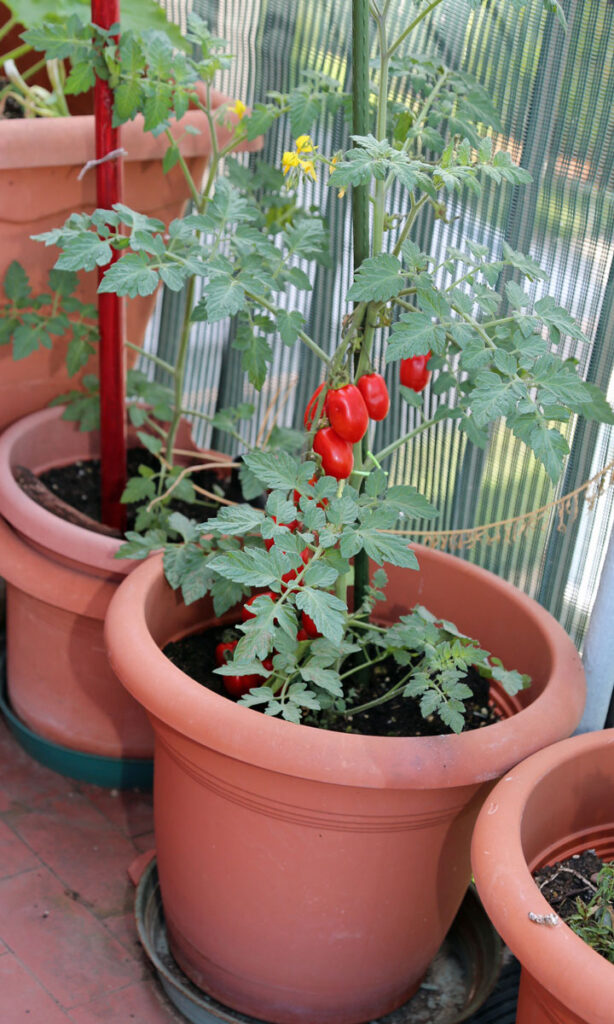
How to Plant Tomatoes in Pots
Not everyone has the space and ability to have a garden plot, but this doesn’t have to keep you from growing your own tomatoes. You can easily grow tomatoes in pots and produce a good harvest. Choose a container that matches the size of the tomato variety you are planting. Some plants grow really tall, so make sure your container will provide the space for the root system. Also, make sure your container will drain water. Fill it with loose, well-draining potting soil that is rich in nutrients. If your tomato will be tall and require staking, it is best to place the stake or cage in the container before planting.
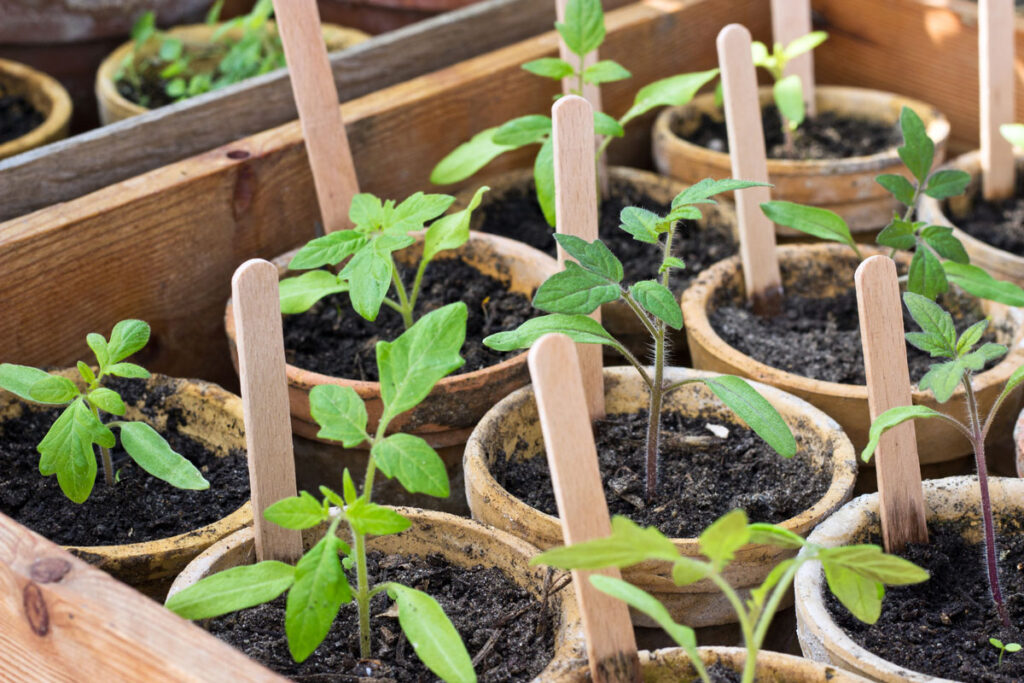
How to Harden off Tomatoes for Best Planting Success
Whether you start your tomatoes from seeds or buy them at the greenhouse, they will have lived a very sheltered life. They are not ready to be planted in the garden the day you purchase them! Gradually introduce your plants to the temps, wind, and other outdoor conditions. A few steps to follow when doing this are as follows…
- Start by placing them outside in a protected area for a few hours. Try to find a sheltered spot close to a building with a shaded side.
- Increase the time and sunlight. Continue to do this for 3-4 days.
- Water the plants. They will dry out more quickly as they are exposed to outdoor conditions.
- Allow them to spend a night outside. If they seem to handle that well, repeat for a few more nights.
- One more step before planting…1 or 2 days before planting, take your plant and place it on the ground where you intend to plant. This will allow the plant to adapt to the exact area, and will turn the stem as it grows towards the sunlight. This is especially helpful if you are planting in an area where you can't dig a 12” hole. You can now bury the entire stem lengthwise as this will also root and grow.
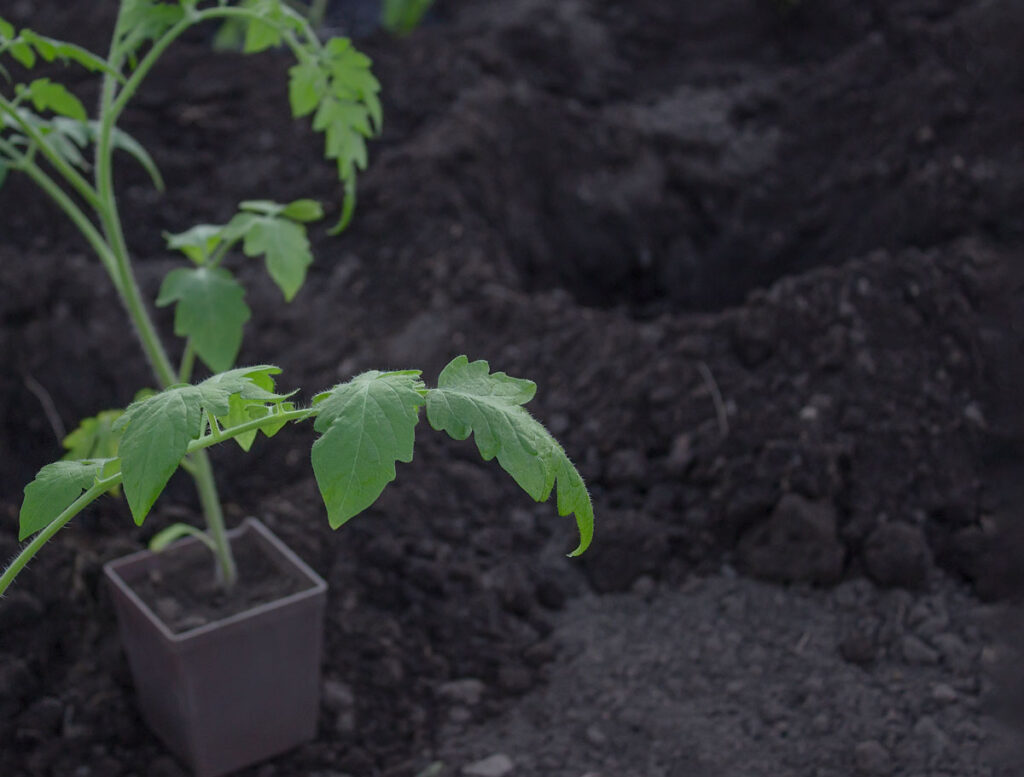
How To Plant Tomatoes
Tomatoes are a vining plant. When you look at the stalk, you will notice tiny bumps and nodules along the stem. These are tiny little fibers that will grow into roots. Because of this, you will be able to plant your seedling in a deep hole. I dig my hole around 12” deep. Before I place it in the ground, I like to pinch off all of the bottom leaves up to the last crown. You will then bury the plant almost to the crown with your dirt and compost mixture. As you are back filling the soil around your plant, make sure to fill in the little dip right around the plant. I also like to build a small mound around the plant to direct the water away from it and help establish a broader root system. Healthy roots equals healthy plants!
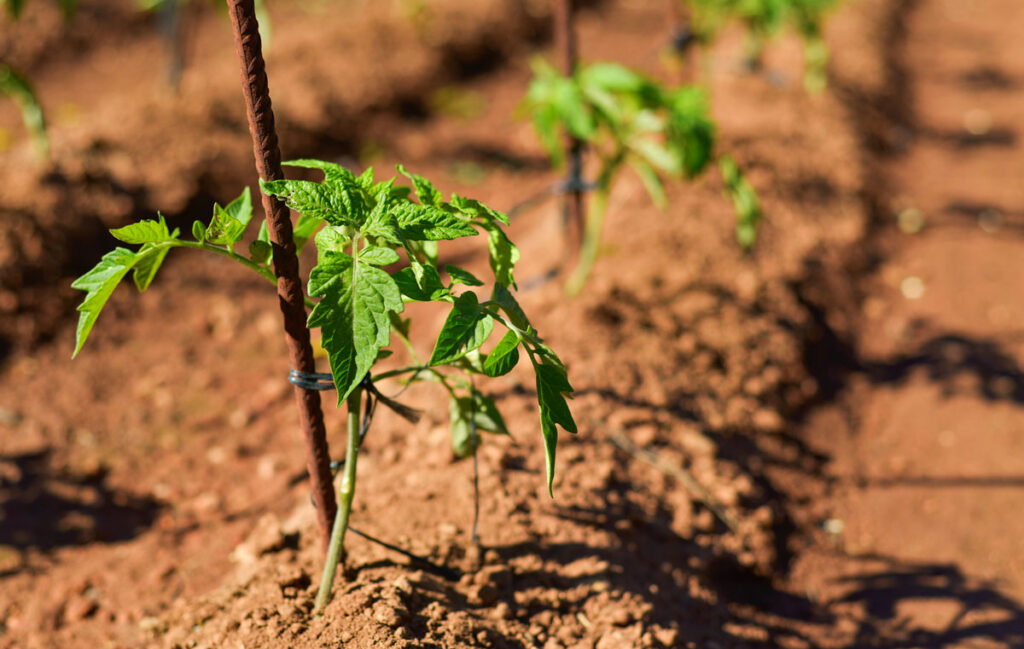
How Far Apart To Plant Tomatoes
The distance between your plants will vary with the type of staking you choose. In our garden we use the trellising system, and I have found that 18 to 24 inches is a good distance to space my plants. However, if you are using a tomato plant cage, you will want to increase the distance to 3 to 4 feet.
Tomato Plant Support: Trellis and T Posts or Tomato Cages
There are different ways of staking up tomato plants. Staking helps the plant to grow a strong, healthy stalk. The foliage on tomato plants is very prone to fungus. By getting the plant up and off the ground and allowing air flow around the base, it helps to combat this. Some people choose to place a wire cage around the plant. The way we have chosen to garden involves cattle panels and stakes! This should be done before planting to prevent foot traffic and damage to the roots in the ground.
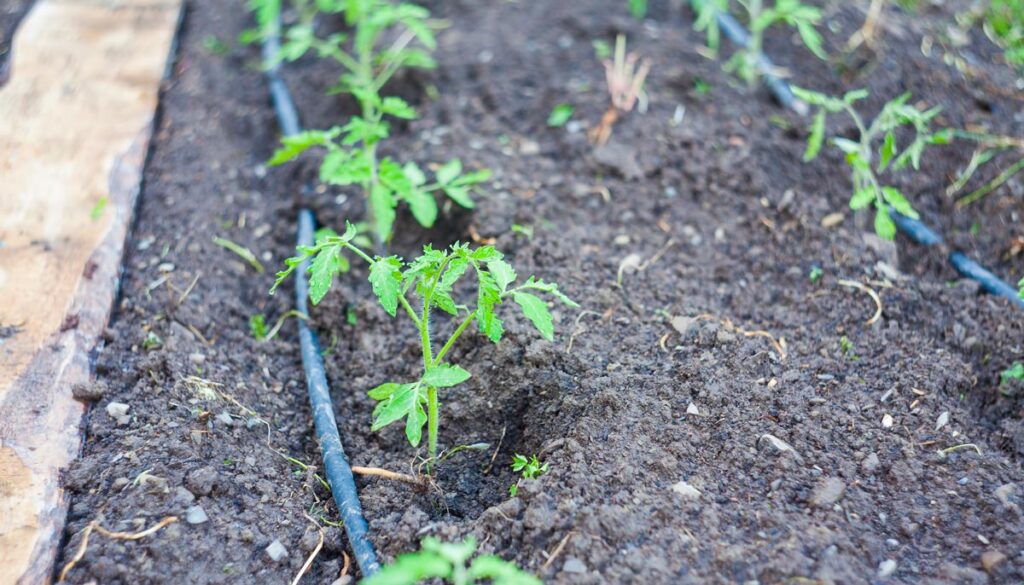
Watering Tomato Plants
Tomato plant foliage is very susceptible to disease, so anything you can do to keep the leaves dry will help prevent that. It’s best to not water with a sprinkler, but to either use a soaking hose or pour water at the base. Mulching is also very important to retain moisture and keep splash back from happening when it rains. Again, everything you do to keep the foliage as dry as possible will help combat disease.
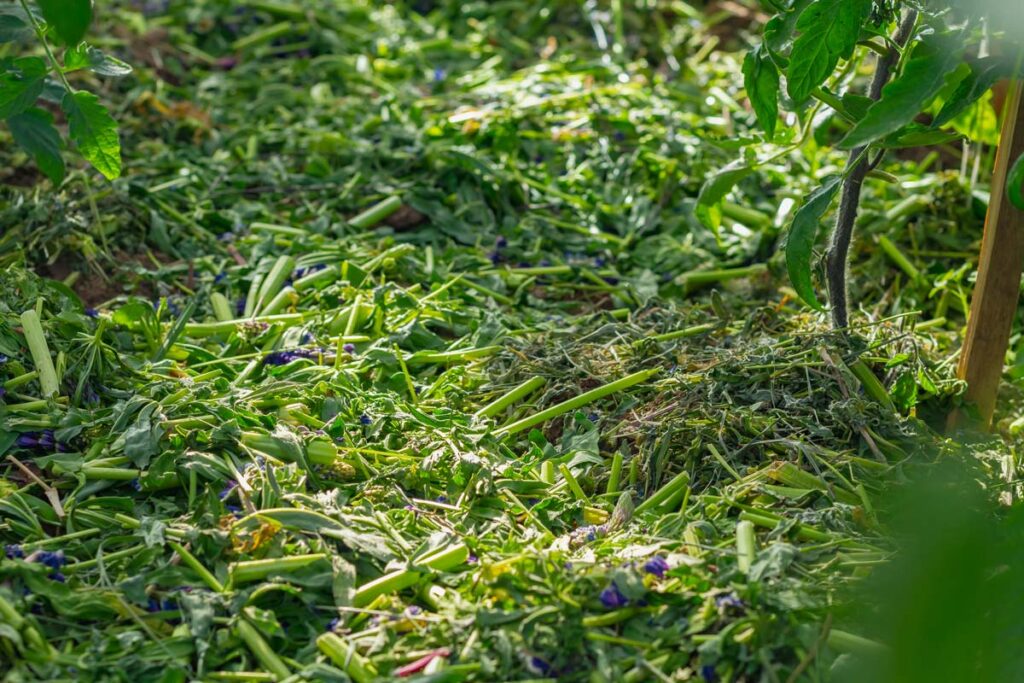
Mulching Tomato Plants
You may wonder why mulch is so important, the reasons are numerous!
- Keeps weeds under control.
- Keeps plants cool in the heat of day.
- Keeps plants warm in the cool of night.
- Retains moisture in the soil.
- By adding mulch and compost, you’re continually feeding your plant.
Pruning Tomatoes
As the plant is growing, you will need to continue to prune it by cutting off the bottom branches. We live in a very humid climate, and I’ve learned it’s best to create air circulation around the plant. By keeping the base open, it allows this to happen. At full height, there should be no branches below 20 inches. As the plant is growing, also make sure to use a tie tape of some kind to continue connecting it to the stake.
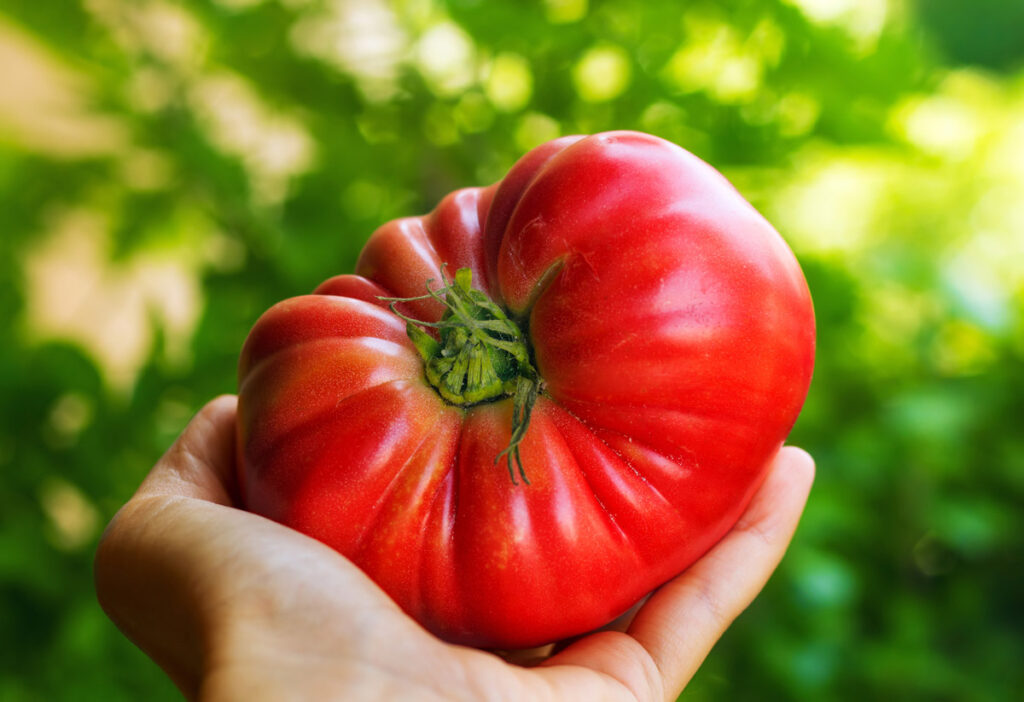
Growing Tomatoes (4 Tips for Beginners)
There are many different things that gardeners do to help produce their best harvest for their location. It’s easy to assume everyone will know what to do for planting success, but we all learn over time. Here are a few main tips that I have learned over the years…
- Tip # 1 – Hardening Off Tomato Plants: Hardening off your tomato plants before putting them into the soil is super important, as I explained above. It allows the plants to adapt to conditions and ensures the plants are ready to thrive.
- Tip # 2 – Use Eggshells in the Soil: You may be wondering if eggshells are good for tomato plants… a long time ago, an older gentleman who was an experienced gardener told me to put an egg in the hole before planting the tomato. I don’t know the science behind it, but I’ve been doing this ever since and don’t want to risk a bad harvest by not doing it! Make sure to slightly crack the egg with your garden shovel when you place it in the ground to allow it to break down in the soil.
- Tip # 3 – Water at the Base: Keeping water off the foliage and at the root helps prevent disease on your plant foliage
- Tip # 4 – Experiment With Gardening: Don’t be afraid to fail if it means learning a lesson! You have to look at your gardening success not just as this year’s harvest, but over the course of a lifetime. Always be looking for methods that work for you and where you live. Your conditions, weather, and growing season will be completely different from someone living elsewhere.
More Related Posts
- How to Build a Raised Garden Bed (On a Budget)
- Gardening For Beginners
- Where to Buy Heirloom Seeds
- My Seed Shopping Method
- Determinate vs. Indeterminate Tomato Plants
- My MUST Grow Garden List (Heirloom Seeds)
- A Complete Guide to Seed Saving
- Best Methods For Successful Pure Pollination When Saving Seeds


